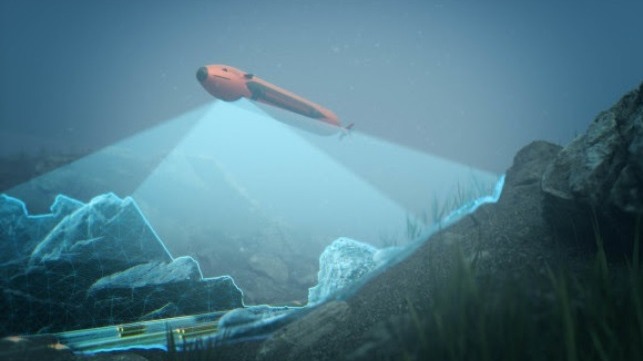New Off-the-Shelf Autonomous Sub Runs on its Own for Two Weeks

Professional sub hunters and military oceanographers have a significant interest in long range autonomous platforms. The U.S. Navy is a leading operator of sea gliders, the slow-moving UAVs that convert vertical motion into horizontal movement by gliding ahead, and it has hundreds of the devices in its inventory. The People's Liberation Army Navy (PLA Navy) has deployed a similar sea glider for collecting the basic oceanographic data that is essential for covert submarine operations.
However, sea gliders lack propellers, and while they are very energy-efficient, they are also quite slow. This week, Kongsberg rolled out a long-range drone that can stay under and still make reasonable speeds. The new Hugin Endurance - evolved from the Hugin 1000/3000/4500/6000 platform - can run for up to 15 days at a time, extending the range of operations for covert data collection. Like its brethren, it can carry and run a wide range of sensor payloads, like a synthetic aperture sonar, a multibeam echo sounder, a sub-bottom profiler, magnetometer, methane sensor or turbidity sensor.
“We are proud to launch Hugin Endurance, which represents a step change in AUV operations,” says Richard Mills, VP of Marine Robotics Sales at Kongsberg Maritime. “Teaming long endurance with large area coverage capabilities allows a single AUV to map areas up to 1,100 square kilometres in a single mission – a target impossible until now."
Kongsberg suggests that the device's persistence and payload make it ideal for defense applications, including military survey; wide area mine detection; or even "patrolling a choke point listening for submarines."
Current military users of the Hugin platform include the U.S. Navy's SUPSALV salvage division, which uses a 6000-meter model for subsea search missions. The Royal Norwegian Navy has been using successive generations of the devices for at least 20 years, and the Indian Navy recently acquired four units for a new series of research vessels.
The family of AUVs has also won acceptance in civilian academic research and commercial operations. Deep sea search and survey company Ocean Infinity has repeatedly made headlines for completing challenging wreck-hunting projects, and its methods rely on Hugin AUVs fitted with advanced sonar systems.
